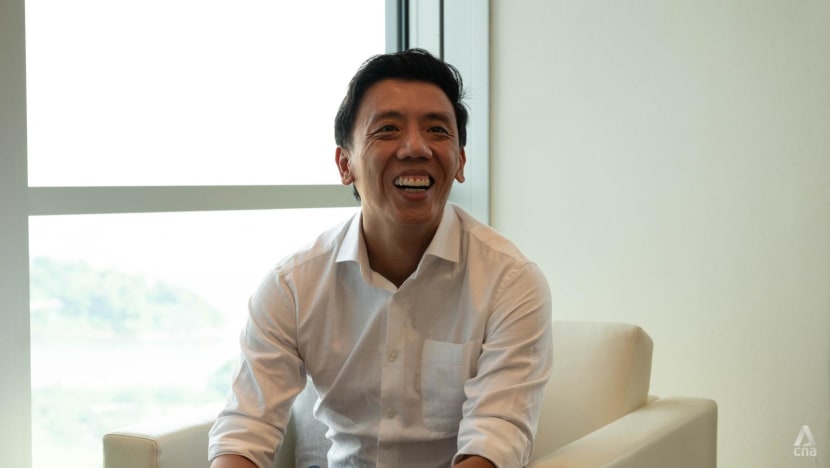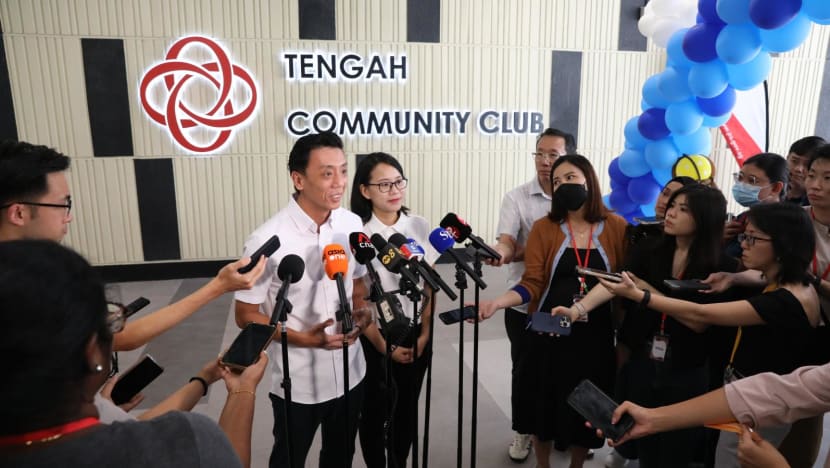Room to improve Singaporean sentiment on public transport, says acting minister Jeffrey Siow
He gave a wide-ranging media interview on Jun 11 spanning long-term plans to recent transport issues.

Acting Transport Minister Jeffrey Siow at the Ministry of Transport on Jun 11, 2025. (Photo: CNA/Faith Ho)

This audio is generated by an AI tool.
SINGAPORE: Among Mr Jeffrey Siow's many goals for his newly started tenure as acting Transport Minister, one stands out: To make Singaporeans proud of their public transport system.
This pride is evident in Singapore’s aviation and maritime sectors, but with public transport, there is room to improve sentiments, said Mr Siow in a wide-ranging interview with media earlier in June, covering topics from long-term plans to recent issues.
“On the public transport side, we can do a lot more, and we will work,” he said.
“It does mean, of course, you must make sure that the public transport side, we run the system as well as we have run the air and sea systems.”
The former senior civil servant, who was in the Ministry of Transport (MOT) from 2012 to 2017, said he was motivated by how his current portfolio is a “very meaningful” one - where his work is felt by everyone.
“Whether you walk, take the train, take the bus, drive, or even when you travel, you go to the airport, or you get goods delivered from overseas because you shop online … transport matters,” said Mr Siow.
He said that decisions in the transport realm can be especially palpable.
For instance, when he was at MOT as a civil servant, he had a hand in the Thomson-East Coast Line project.
“Now I'm taking the train that we said we would design in that way. In that manner, it became a tangible reality,” said Mr Siow.
The very visible transformation of ideas into reality will also be captured in mega projects such as Changi Airport’s Terminal 5 and the Tuas Port - both announced when he was in the transport ministry.
“So it’s real, it’s tangible, it is easy to do work when you feel that whatever you are doing matters,” he said.
But he also acknowledged that with all that, comes increased scrutiny.
“Everybody has an opinion on whether or not you're doing things right, and I am not short on conversations with people about issues, and I enjoy it very much,” he said.
These conversations even include discussions with his mother on transport-related topics.
TAKING ON A "HOT POTATO" MINISTRY
His role as a minister now is quite different, said Mr Siow.
"You are setting the direction. You are setting the pace at which the work is done. And I'm working together with my civil servant colleagues to be able to do that, and also be able to communicate what we're doing to the public."
He added that to him, there are three key parts to his new job: To persuade when there's disagreement, to make sure there is sizeable support for what he wants to do, and to inspire and get people to trust that he's doing the right thing.
"So the content part I can do, the political part I'm learning," Mr Siow said. "The transport job is not easy ... it's politically tense, it's public-facing."
Since he took on the acting minister role on May 23, several hot-button transport issues have already emerged.
On May 29, a 49-year-old private-hire driver died from a stroke, igniting discussion on whether the long hours put in by drivers could be better managed or regulated.
On Jun 3, SMRT was slapped with a S$3 million (US$2.33 million) fine over a major East-West Line disruption in September last year.
On Jun 6, a container barge ran aground off Tanjong Beach in Sentosa.
Then on Jun 11, Jetstar Asia, one of two locally-run low-cost carriers, announced it would cease operations on July 31.
On how he keeps a cool head with such issues coming in thick and fast, Mr Siow said it was all to be expected.
“People are interested, and that's why they care about what's happening.
“It does mean we have to maybe work at a higher cadence, to respond, to explain, … to persuade, to inspire, and in some ways, to be ready,” he added.
He said he sees this positively.
“I would rather be doing something that people care about, incidents notwithstanding, and doing things that help people, make sure that they are well taken care of, and improve their lives.”
Mr Siow noted that by nature, some issues are “zero-sum”, such as how to decide on the best bus route.
“I can, of course, draw the bus route to cover everybody, but that means the bus (route) is very long,” he said.
“I know I won't be able to please everyone, it's not possible ... But I will try to do the greatest good for the greatest number of people. That's my objective.”
Mr Siow revealed that he takes public transport to his workplaces at the Ministry of Transport and the Ministry of Finance - where he is also a Senior Minister of State - “whenever I can”.
“It's helpful to actually see things for yourself,” he said. “Whenever I see something … LTA is kept a little bit busy.”
TO-DO LIST
Mr Siow also laid out some of his plans for the next five years.
One is to ensure residents of Housing Board towns further away from the city have better connectivity.
He said during an interview earlier in June that the time taken to travel by public transport from Tengah to the city area was two to three times longer than that of car rides, and that he aimed to cut this down to one to two times longer.
“You could apply that to Punggol, you could apply that to Jurong West, you could apply that to Pasir Ris … where I think the public transport journey time is not as competitive relative to taking a car,” he said on Jun 11.
He added that ensuring better bus connectivity to train stations would be key here, while also boosting Singapore’s car-lite vision.
“It's a virtuous cycle … demand for private transport would be balanced, it will become less (and) public transport will be more viable and attractive."

CELEBRATING TRANSPORT
In the same vein as making Singaporeans fall in love with the public transport system, Mr Siow also hopes that there can be more thorough appreciation for Singapore’s transport history.
“Transport is, in fact, very much part of the Singapore Story,” he said. “There is a reason why in many major cities - New York, London, Tokyo - they all have a transportation museum.”
In Singapore, there is a “mini transport museum” at the Land Transport Authority's headquarters at Hampshire Road.
Called the SG Mobility Gallery, it is where schoolchildren go on excursions, but Mr Siow hopes more transport artefacts from Singapore’s history can be displayed there.

He said he had noticed general interest in such memorabilia, citing Knackstop, an initiative where public transport merchandise such as model trains and transport-themed keychains are sold at vending machines around Singapore.
In looking back at the past, the aim is to instill pride in a system Mr Siow described as unique to Singapore.
“If I can bring that love and pride in our transportation system back ... I think some of the more difficult things we have to do, some of the supposed problems we have to address in the future - I think we'll be able to better manage."










.jpg?itok=ZqFafVWl)









